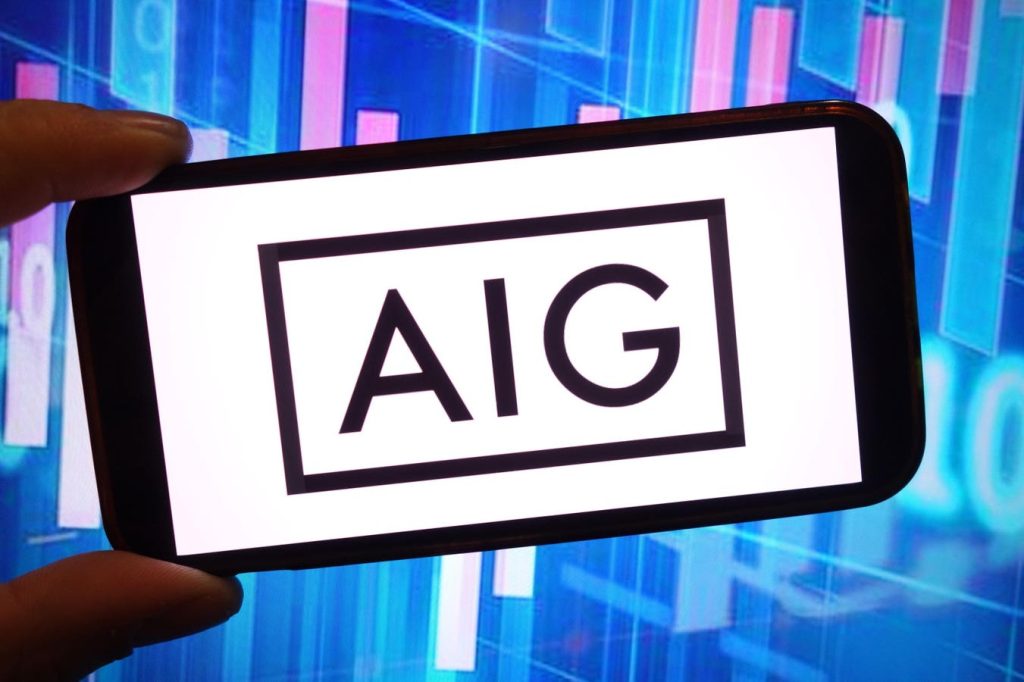American International Group (AIG), a prominent player in the insurance industry, has experienced a stock performance divergence compared to the broader market and its peer, Travelers. While the S&P 500 surged by over 25% in the past year, and Travelers mirrored this growth, AIG’s stock only saw a modest 7% increase. This disparity prompts a closer examination of the factors influencing AIG’s stock trajectory and its future outlook within a dynamic macroeconomic landscape.
AIG’s recent financial performance, particularly in Q3 2024, paints a picture of resilience and growth. The company exceeded earnings expectations, with adjusted earnings per share climbing 18% to $1.23. This positive performance stemmed from robust underwriting results and enhanced returns on investments, showcasing the company’s ability to navigate market fluctuations. The Global Commercial business segment emerged as a key driver of this growth, with a 6% year-over-year increase in net premiums on a comparable basis. This segment, encompassing property, casualty, and specialty coverage, benefited from a strong retention rate of approximately 88% and the addition of $1.1 billion in new business. The buoyant equity markets further bolstered AIG’s financial standing, contributing to a 14% rise in net investment income to $973 million in the last quarter.
Despite consistent stock value increases over the past four years (54% in 2021, 14% in 2022, and 10% in both 2023 and 2024), AIG’s performance has lagged behind the broader market. In contrast, the Trefis High Quality Portfolio, a diversified collection of 30 stocks, has consistently outperformed the S&P 500 benchmark over the same period, demonstrating superior risk-adjusted returns. This underscores the importance of diversified investment strategies, particularly in an environment characterized by macroeconomic uncertainties. A key question arises: given the prevailing economic climate, marked by potential interest rate cuts and geopolitical tensions arising from multiple global conflicts, what lies ahead for AIG?
AIG’s strategic direction provides insights into its future prospects. Following the divestiture of its life insurance and retirement business, the company has sharpened its focus on property and casualty insurance. This strategic shift is expected to enhance both growth rates and profitability. The shorter-term nature of property and casualty insurance allows for greater flexibility in premium adjustments, enabling AIG to respond more effectively to evolving risks. This contrasts with the rigid, long-term premium structures characteristic of life insurance. Moreover, this segment caters to higher-margin, niche markets experiencing increasing demand, presenting promising growth opportunities for AIG.
Several external factors could further influence AIG’s stock performance. The recent re-election of Donald Trump to the U.S. presidency may create a favorable environment for insurers. Anticipated regulatory easing and potential tax cuts could boost profitability across the industry. Additionally, AIG’s commitment to returning capital to shareholders remains a compelling aspect of its investment thesis. The company repurchased approximately $1.5 billion of common shares in Q3 2024, contributing to a total capital return of $6 billion to shareholders over the first nine months of the year. These share buybacks are expected to drive earnings per share growth, further enhancing shareholder value. Based on these factors and projections, AIG’s stock is estimated to be valued at around $90 per share, representing a significant 24% upside from its current market price.
In summary, AIG’s recent performance, while positive, has not kept pace with the broader market. However, the company’s strategic focus on property and casualty insurance, coupled with potential tailwinds from the changing political landscape and its robust capital return program, paints a positive picture for future growth. While macroeconomic uncertainties persist, AIG’s strategic positioning and financial strength suggest a potential for significant upside in its stock price, offering an attractive investment opportunity for those seeking exposure to the insurance sector. The comparison with Trefis’s High Quality Portfolio highlights the importance of diversification and the potential for superior risk-adjusted returns through a strategically curated investment approach.
Furthermore, the dynamic nature of the insurance industry, influenced by factors such as regulatory changes, technological advancements, and evolving consumer demands, necessitates a continuous assessment of AIG’s performance and prospects. While historical performance and current valuations provide a valuable framework for analysis, ongoing monitoring of market trends and AIG’s strategic responses will be crucial for informed investment decisions. The interplay between external factors and internal strategic initiatives will ultimately determine the trajectory of AIG’s stock price and its long-term success in the competitive insurance landscape.

